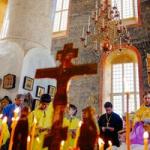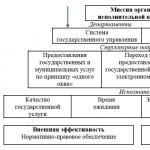In the context of the implementation of the Federal State Educational Standard, it is of great importance. Over the course of decades, educational institutions have developed a system of work that has a certain impact on the professional competence of teachers and their achievement of high results in teaching and raising children. However, the new quality of education in the context of the implementation of the Federal State Educational Standard requires adjustment of forms, directions, methods and assessment of methodological activities.
Relevance of the issue
Currently, the methodological support of the pedagogical process is presented as a specific system through which the teacher implements his own model of teaching, raising and developing children. It includes the selection of specific technologies, their implementation and testing in the process of activity, individualization and differentiation, and changing the content of training. The Federal State Educational Standard, as the basis for improving the quality of education, imposes certain requirements on an educational institution. By implementing them, the institution does not stop there and improves management mechanisms. This leads to a transition to a new level, within which an innovative school is formed. It solves organizational, economic and pedagogical problems. Thus, the quality of education improves. In the context of the implementation of the Federal State Educational Standard, the preschool educational institution plays no less important role than the secondary educational institution. At this stage, the foundation is laid for the subsequent development of each child’s individual abilities.
System characteristics
Management of the quality of education in the context of the implementation of the Federal State Educational Standard is focused on the formation of sustainable mechanisms for the development of an innovative model for monitoring the pedagogical process in institutions at different levels. This system makes it possible to achieve compliance with regional and social needs and assumes a planned process. In the process of work, the key psychological and pedagogical conditions are determined, through which the effectiveness of education is ensured.
Key elements
The implementation of the Federal State Educational Standard as a condition for improving the quality of education is based on:

Organizational base
The quality in the context of the implementation of the Federal State Educational Standard, as well as the pedagogical process in secondary educational institutions, must be assessed and improved in a systematic manner. For this purpose, theoretical provisions have been developed:
- Quality management of the pedagogical process is designed to eliminate the discrepancy between the results of the educational work of the school and the realities taking place in the information society today.
- The life cycle for obtaining results is a year.
Achieving the planned level of indicators of teaching activity is characterized by identifying new opportunities and needs of students. This encourages teachers to seek to abandon outdated techniques and forms of organizing their professional activities. By improving the quality of primary education in the context of the implementation of the Federal State Educational Standard, the educational institution carries out targeted development of the system of requirements. The pedagogical environment in the institution is constantly updated, maintaining contact with the information society.
Innovation
They should be understood as methods that significantly change the results of the pedagogical process. These approaches help improve or create new ones:

To introduce innovation, a systemic strategy for changing the student, the teacher, and the entire educational institution is built. The quality of education in the context of the implementation of the Federal State Educational Standard of Education is improved by designing processes at the technological, organizational, and content levels. These three elements, mutually penetrating each other, form an organic, unified system. When some components change, others are also adjusted. This, in turn, leads to transformations throughout the entire system. Recently there has been an intense search for new ideas. Issues of humanization, differentiation, profiling, and integration are being actively studied at the theoretical and practical levels. However, none of these concepts can be considered as the main, all-encompassing one in a complex pedagogical system.
What is the quality of education in the context of the implementation of the Federal State Educational Standard?
It is considered as a generalized measure of the effectiveness of the functioning of the pedagogical system of an educational institution. The quality of education in the context of the implementation of the Federal State Educational Standard is the result of educational and training processes. They are organized in accordance with the goals and objectives set in the program. The effectiveness of the entire pedagogical system will depend on how fully they meet the needs of children. The goal should be the holistic development of the younger generation, readiness for self-determination, creativity and self-improvement, and independent organization of each student’s own life. The quality of education in the context of the implementation of the Federal State Educational Standard is an integral characteristic. It reflects the level of compliance of pedagogical and work processes in an educational institution, expressed in indicators and criteria, with established state requirements, the results actually achieved, and individual and social expectations. This characteristic shows the degree of assimilation of the content of educational material, moral, mental and physical development that the child has achieved in accordance with his individual aspirations and capabilities. The quality of education in the context of the implementation of the Federal State Educational Standard acts as a key indicator of the success of an educational institution. In this regard, organizing events aimed at improving it is a priority for the administration of the institution.

Specification
The quality of education in the context of the implementation of the Federal State Educational Standard LLC, as well as other stages of the pedagogical process, is explained through the target components of the program, requirements for the learning environment, and expected results. Mastering state standards presupposes the formation in educational institutions of an innovative system for assessing children's achievements. This, among other things, necessitates the creation of a modern management system.
Expected performance
The key goal of implementing educational programs is to ensure planned results for graduates to achieve skills, knowledge, attitudes, competencies and skills at each level. They are determined by the personal, social, family, and state needs, as well as the capabilities of each child, his individual characteristics and state of health.
Individual results
These include:

Metasubject indicators
These include:
- UUD and interdisciplinary concepts mastered by students.
- Ability to use knowledge and skills in practice.
- Independence in planning and learning, organizing interaction with peers and teachers.
- Formation of an individual trajectory in education.
Subject results
Among them:
- Skills acquired by children during the learning process that are specific to a particular subject area.
- Activities aimed at obtaining new knowledge within the discipline, its transformation and application in various situations.
- Formation of a scientific understanding of basic theories, types of relationships, mastery of terminology, techniques and methods.
Performance criteria
The requirements established for the implementation of basic training programs in an educational institution characterize the financial, personnel, material, technical and other conditions in which the learning of educational material must be carried out. The criterion for the effectiveness of the implementation of these standards is the creation of an environment that:

Participants' capabilities
The conditions in which educational programs are implemented must ensure:

One of the key goals facing the teaching staff and education authorities is updating outdated curricula, technologies and methods of their implementation, bringing them into line with the dynamics of the development of the entire system, the needs of children and their parents, taking into account the characteristics of the region.
Lyudmila Kochetova
Implementation of a system for assessing the quality of education in preschool educational institutions
One of the priority areas for the development of the preschool education system is to improve the quality of preschool education in the context of the educational policy of the Russian Federation;
Quality of preschool education- this is such an organization of the pedagogical process in kindergarten in which the level of education and development of each child increases in accordance with his personal age and physical characteristics in the process of upbringing and training.
What does it depend on? quality preschool organization?
From quality of work of the teacher,
From the relationships that have developed in the team,
From the conditions that the leader creates for the creative search for new methods and forms of working with children,
From the objective assessments performance results of each employee.
The quality of education in a preschool institution - this is the result of the team’s activities, which is determined by the following positions:
- like a child in an institution implements your right to individual development in accordance with age-related capabilities and abilities;
– how the pedagogical process is organized in kindergarten (routine, choice of programs and technologies, provision of benefits, system increasing the professional growth of teachers through various forms of methodological work, etc.);
– what conditions are created in the preschool organization ( educational environment oriented towards self-worth of preschool childhood; positive microclimate in the team; quality work incentive system, creative orientation of the activities of the kindergarten team and its leader; focus on educational family needs and requests; systematic brainstorming educational process and making competent management decisions, etc.)
Preschool standard - standard conditions. But this does not mean that when building quality assessment systems you need to focus only on the conditions.
Vice President, member of the expert council for preschool education, etc. d. (I won’t list all her titles) Oksana Skorolupova notes that quality assessment system is built not to call anyone good or bad, but so that everyone learns to work qualitatively so that all educators grow using these tools quality assessments.
To quality assessment system DO has become a tool for increasing quality activities of teachers, it is necessary to approach its construction comprehensively: evaluate not only the conditions built in kindergarten, but also the pedagogical process itself and its results. Therefore, the instrument education quality assessments are:
Self-examination
Diagnostics,
Monitoring or control. By the way, among scientists there is no clear distinction between these concepts, since all system, and the facts are compared.
Most often we use basic common forms control: operational, thematic, final.
What do you need? evaluate?
In the inner education quality assessment system(VSOKO) tracked quality of the educational process, conditions and results of preschool education.
Let's look at all three points in more detail.
1. Quality of the educational process:
What questions does he have? evaluate:
1.1 quality of educational program, methods and technologies used in educational process;
1.2 quality of educational activities – independent and joint activities of children and adults; (how much the teacher knows how to organize various activities, including independent activities throughout the entire time);
1.3 quality interaction of teachers with parents and children in the process of education and training.
Note: We must remember that there should not be a classroom-lesson form of education, i.e. if educational model is being implemented, then this indicates the absence quality of education, because it does not correspond to government guidelines in preschool education.
Our preschool educational institution has developed some control tables that help us in assessing the quality of the educational process. (See tables)
2. Quality of educational conditions:
The standard specifies 5 groups requirements:
Financial conditions – provision of state guarantees;
Material and technical conditions - characteristics and provision of premises with equipment and methodological materials in accordance with regulatory requirements;
Developing subject-spatial environment - compliance with the requirements of the Federal State Educational Standard for Educational Education;
Psychological and pedagogical conditions - personality-oriented interaction between teachers and children, support pedagogy, providing the child with the opportunity to choose;
Personnel conditions – job composition, sufficient number and necessary qualifications of personnel.
Contents of the procedure assessments includes issues of certification of teachers, their readiness to improve their teaching skills ( systematic course completion, participation in the work of the RMO, knowledge and use of modern pedagogical methods and technologies, educational achievements of students, participation in professional competitions at various levels, as well as quality work programs and calendar-thematic planning. Questions must be included for assessment of the properties of RPPS:
Variability - the presence of space for play, construction, privacy, and so on, various materials and their periodic replacement;
Transformability – the ability to change depending on educational situation, interests and capabilities of children;
Multifunctionality - the ability to use the components of the RPPS in different types of activities;
Accessibility – free access to premises, toys and materials;
Safety – compliance with sanitary and epidemiological standards and fire safety rules.)
For we use estimates. control tables. (See tables)
3. Quality of results:
Dynamics of children's mastery of content educational program in five educational areas. Comparison of a child with himself - how much he has developed over a certain period of time;
Compliance of the results obtained with the planned goals. Goals are formulated based on the targets of the Federal State Educational Standard for Educational Education as social-normative age characteristics of the child’s possible achievements.
Contents of the procedure assessments includes issues of pupils’ achievements (including indicators of socialization, as well as participation in various level competitions, results of pupils mastering the basic general education program, education of preschool children (social-normative characteristics, parental satisfaction quality of educational results and results of pedagogical diagnostics (through pedagogical observations, preschooler’s portfolio.)
For this we use the following. control tables, accounting and analysis schemes. (See tables)
What does it give? rating system?
Information
Internal rating system helps to determine the effectiveness of the pedagogical process, obtain information about the state educational activities and feedback. Based on this information, the kindergarten management analyzes the effectiveness of education and training and makes management decisions. Positive results are accordingly used to motivate teachers.
Motivation of teachers
Participation in assessing the quality of teachers, managers, methodologists and parents increases the level of their pedagogical culture, interest in education, encourages a deeper study of child psychology and self-analysis of pedagogical work.
Formation of a child's personality
For full-fledged formation of a child’s personality, it is necessary to know the strengths and weaknesses of a preschooler, which helps to track quality assessment system. Based on its results, the teacher selects methods and techniques individually for each child. This approach has a positive effect on the level of development of children, as it helps the teacher not to lose sight of the shortcomings and difficulties in nurturing the child’s personality.
Action correction
Among the results educational works are both positive and negative. Internal Quality control will help you quickly take measures to strengthen the positive and weaken the negative.
How evaluate?
Educational the organization independently determines the procedure education quality assessment within the framework of regulatory documents. The head organizes the teaching staff for educational quality assessment process and created conditions. The Regulations on system of internal assessment of the quality of education in preschool educational institutions.
In conclusion, it must be said that it is important for all of us to learn that a child is not is assessed in comparison with others, but only with oneself. (How the child has changed over time, how much he has grown qualitatively). Only teachers working directly with a particular child and his parents are allowed to view the results. When representatives of inspection organizations demand to show diagnostic results, they are shown only in a generalized form - how many children showed a low, medium or high level of development. The results of a specific child are not given. (Skorolupova O.)
However, questions about the results assessment of the quality of preschool education heard at meetings of the pedagogical council, methodological council, meetings with the head. Openness of results assessments carried out through a public report by the head and posting of analytical materials on the website of the preschool organization.
The article presents the features of quality management of preschool education.
The components of assessing the quality of preschool education are presented.
An approximate model for assessing the quality of preschool education in a kindergarten is described.
Download:
Preview:
NOVOAGANSK MUNICIPAL BUDGETARY PRESCHOOL EDUCATIONAL INSTITUTION KINDERGARTEN OF CARE AND HEALTH "SOLNYSHKO"
Bastron I.Ya., head
Topic: “Development of a model for assessing the quality of preschool education in a kindergarten”
The great goal of education is not only knowledge,
but above all actions.
N.I. Miron
Slide 2. The main task of the state educational policy of the Russian Federation in the context of modernization of the education system isensuring modern quality of education, including preschool.The preschool education system is currently actively developing. Modern society makes new demands on preschool educational institutions, on the organization of the educational process in them, the selection and justification of the content of basic and partial educational programs, the results and effectiveness of their activities, the selection and training of teaching staff.
One of the main goals of the Federal State Educational Standard for preschool education is to ensure state guarantees of the level and quality of education based on the unity of mandatory requirements for the conditions for the implementation of basic educational programs, their structure and the results of their development.
Slide 3. The quality of preschool education is a characteristic of the preschool education system, reflecting the degree of compliance of the actual educational results achieved with regulatory requirements, social and personal expectations. The problem of improving the quality of preschool education is very relevant in modern conditions of modernization of the preschool education system and requires management decisions to be made at various levels of the preschool education system.
An indispensable condition for the validity of these decisions is reliable information:
On the quality of preschool education;
On the main trends relating to the quality of educational services for preschool children in preschool educational institutions;
On the compliance of the education provided with modern ideas about the quality of preschool education.
In this regard, it can be stated that the strategic goal of improving the system for assessing the quality of preschool education is to optimize the quality management of preschool education. It follows from this that improving the quality of preschool education requires improving the system of its assessment, which should meaningfully (in accordance with modern ideas about the values of the development of a preschool child) and organizationally regulate the processes of ensuring and improving the quality of preschool education through procedures for assessing this quality. At the same time, assessing the quality of preschool education is considered in the interests of the individual, society, the state, and the education system itself.
Slide 4. Managing the quality of preschool education required identifying problems in the activities of preschool educational institutions that require increased attention:
- creation of appropriate conditions for organizational training of preschool children;
- organization of analytical activities and scientific and methodological support for assessing the quality of preschool education;
Updating the controlled and control subsystems of the preschool educational institution;
Development of new practices in preschool education through scientifically based support of experimental activities.
Slide 5. The quality of education in our kindergarten is considered as the degree of compliance of the totality of properties and results of education of preschool children with the predicted development goals of preschool educational institutions based on the Federal State Educational Standard, the needs and expectations of participants in the educational process. From this point of view, the quality of education is considered as a combination of three components:
Quality of the educational process;
Quality of conditions for carrying out educational activities;
Quality of results.
One of the components of the quality of education in our preschool educational institution is the educational process, which has its own specific control levers. First of all, the educational process is carried out in conditions of developmental interaction between participants in the educational process and the management of its quality and involves influencing its components - target, content, activity, and results. This means that increasing the effectiveness of the activities carried out will depend on the quality of the educational work of adults (teachers and parents) and the child’s own activities at each stage of the educational process.
To improve the quality of conditions for carrying out educational activities, we have identified the following areas:
Financing (involves defining flexible financing standards, switching to equity financing, and monitoring the expenditure of budget funds);
- staffing(involves the development of a system of staffing and increasing the professional competence of teachers through the organization of a system of advanced training and self-education).
And finally solving the problem of managing the quality of preschool education conditions requiresincreasing the level of managerial culture of managersPreschool educational institution: creating conditions for improving the quality of the educational process in preschool educational institution, mastering the technology of quality management.
Slide 6. Our institution uses:
education management technology based on results, developed by P.I. Tretyakov and K.Yu. White. By defining the main goals for the development of their preschool educational institution, each leader, together with the teaching staff, organizes the entire pedagogical process, which means they constantly compare the results obtained with the planned ones. This requires making prompt decisions on the situation, i.e. based on specific results.
project management technology(N.A. Vinogradova, N.V. Miklyaeva), considering project management as the management of preschool educational institutions in conditions of an innovative operating mode.
Ultimately, regardless of the priority technology for managing the quality of work of preschool educational institutions, the main problem remains the creationmodels for assessing the quality of preschool education.This problem increases if we consider the preschool educational institution in the development mode, that is, assuming constant changes in the goals of each stage of the preschool educational institution development in accordance with the results of the pedagogical process.
Assessing the quality of the results of the educational process is the most discussed topic today.
The quality of education is assessed in the form of licensing, state accreditation of educational institutions, control and supervisory activities, certification of teaching and management personnel, and monitoring. This system is focused primarily on assessing educational conditions, and not on the effectiveness of preschool education, determined by the level and dynamics of the child’s development. The quality criteria are federal state educational standards for the content of education, the professional competence of the teacher in terms of his person-oriented interaction with the child, as well as for the organization of the subject-development environment in preschool educational institutions.
Slide 7. There are two approaches to quality management:
one - through the management of the pedagogical process and its components;
the other is through personal subjective aspects in the management system.
Consequently, managing the quality of education in a preschool educational institution requires special approaches, non-standard solutions that could fully take into account the characteristics of the educational environment, the requests and needs of parents and other social partners of the preschool educational institution. There is a need to develop a model for assessing the quality of preschool education.
However, to implement a model for assessing the quality of preschool education in preschool institutions of various types, it is necessary to supplement it with systemic and process approaches to management. It is these conditions that will ensure greater improvement in the quality of education.
Slide 8. The model for assessing the quality of preschool education includes:goals, content, organizational structure, pedagogical mechanisms for systemic correction of the educational process, allowing the implementation of the regulatory and marketing goals of the preschool educational institution in the partnership interaction of all subjects.
Improving the quality of preschool education is possible thanks to a comprehensivethe use of basic methodological approaches to assessing the quality of preschool educational institutions.
1.Axiological approachThe assessment involves an analysis of values that are the basis for determining the structure and content of the system for assessing the quality of preschool education. The modern state policy of the Russian Federation in the field of preschool education is based on the ideas of humanization, therefore the main professional and pedagogical value when determining indicators for assessing the quality of preschool education within the framework of this approach is the child.
2. Sociocultural approachin assessing the quality of education in preschool educational institutions is determined by the nature of the interaction of children with adults, with other children, with the objective spatial world. The level of independent behavior and its ability to solve everyday life situations is assessed; social competence in communicating with other children and adults
3.Competence-based approachappears promising, since in the context of modern ideas about the purpose of education, key competencies are relevant for preschoolers and record the degree of their readiness to be included in a new - school life. When assessing the quality of education within the framework of this approach, the degree of mastery of competencies (intellectual, linguistic, social and physical), as well as modes of behavior (arbitrariness, independence, initiative, creativity, ability to choose) and his attitude towards himself (self-image) are identified , level of self-esteem, presence or absence of self-esteem).
The integrated application of the described approaches makes the problem of assessing and measuring child development fundamentally solvable and makes it possible to involve parents (not specialists) in assessing the quality of preschool educational institutions as independent subjects of assessment.
A model for assessing the quality of preschool education in a preschool educational institution is a set of interconnected functions, an object, subjects and subject of assessment, indicators and criteria, assessment procedures and results. Developing the problems of scientific and methodological assurance of the quality of preschool education, M.V. Krulecht draws attention to the compliance of the assessment of the quality of preschool education with the goals of education and development of preschool children, the educational standard, and the needs of consumers of educational services.
Slide 9. Functions for assessing the quality of preschool education:
1. The instructive and methodological function is to create regulations for the evaluation of institutions of various forms that implement preschool education programs.
2. The control function includes conducting assessment procedures in individual educational institutions and organizations.
3. The analytical function includes the collection and analysis of data on preschool educational institutions, building on this basis a rating of institutions implementing preschool education programs according to the “quality of education” parameter.
4. The information function can solve three problems.
Firstly, the information is addressed to the pedagogical community in order to form modern ideas about the quality of education in preschool educational institutions.
Secondly, the information is addressed to parents, for whom it may become the basis for choosing the form and place of preschool education for their child.
Thirdly, one of the tasks of informing about the results of quality assessment may be the coordination of the efforts of the preschool educational institution and the school.
Slide 10. Objects, subjects and subject of assessment:
When assessing the quality of education, it is necessary to clearly define what is being assessed (object), who is assessing (subject) and why is assessing (subject). In this regard, assessment of the quality of education (rating system) should be divided into assessments of the quality of education from the external environment (that is, assessments of consumers of educational services) and internal assessments of quality in the education system itself.
Slide 11. The entire set of approaches to identifying assessment parameters can be reduced to the following five clusters:
1. Educational activities.
The level of quality of educational programs and their methodological support is assessed, the content of which allows teachers to build the educational process in accordance with modern requirements and the level of development of society and at the same time without unnecessary burden for students.
2. Developmental environment.
The degree of enrichment of the subject-spatial environment is assessed, the content of which provides the child with opportunities for self-development. The indicators are the quantitative ratio “teacher-children”, education and professional experience of teaching staff, features of the room in which the children are located.
3. Psychological comfort of the child.
Only good things, i.e. meaningful, varied education, focused on child development, can give a positive quality to pedagogical work. The level of ensuring a child’s psychological comfort in an educational institution is assessed in order to preserve his physical and mental health. The most optimal characteristics of the behavior of a teacher who provides quality support are: a responsible position, acceptance of the child, meaningful communication, and the ability to empathize.
4. Health-saving activities.
The good quality of the physical context of a child’s life in an institution is determined not by the number of objects, but by their quality, variety, clearly structured space, and its stimulating influence. The quality of the use of health-saving educational technologies is being assessed, which makes it possible to organize the process of education in a preschool educational institution in such a way that the child can participate in educational activities without unnecessary physical and mental stress that undermines health.
5. Satisfying the needs of the family and child for the services of a preschool educational institution.
Thus, we can identify the following integral criteria for assessing a preschool educational institution, which determine the quality of preschool education:
Ensuring the well-being of the child and his comfortable stay in kindergarten;
The kindergarten’s readiness to preserve the child’s health and ensure the necessary correction of developmental deficiencies;
The focus of preschool education on the child’s success at the next stage of education;
Satisfying the needs of families and children in the services of preschool educational institutions.
Solving the problems of improving the quality of preschool education in preschool educational institutions requires a systematic approach to its assessment. An important condition for objectivity is the systematic and regular procedures for collecting and examining data on the quality of educational activities of a preschool institution.
Slide 12. Assessment methods
The main assessment methods are the following:
Studying the submitted materials of self-analysis, regulatory legal documentation;
Analysis of program, educational, methodological and personnel support of the stated focus of the educational program;
Observation;
Study of a subject-specific development environment, as well as conditions that ensure maximum satisfaction of the requests of parents of pupils;
Analysis of planning, diagnostic results.
Slide 13. Assessment stages
Assessing the quality of preschool education in preschool educational institutions includes several stages:
Identification of quality indicators;
Definition of evaluation criteria (benchmark, requirement or standard), based on
what this indicator will be assessed;
Formation of a scale of levels of achievement of quality criteria;
Development of tools;
Organization of collection, processing, analysis, interpretation of received data;
Presentation and dissemination of generalized information for different categories of users;
Organization of broad public and professional discussion;
Slide 14. Evaluation results.
A generalized assessment is made in several areas assessed:
The level of implementation of the educational program of the relevant focus;
The level of organization of the subject development environment of the preschool educational institution, taking into account the stated focus of the educational program;
The nature of interaction between teachers and children.
Prospective correlation of the results achieved in a preschool educational institution with a simulated portrait of a 6.5–7 year old child at the exit from preschool education.
Targeting of assessment results:
Teaching staff of institutions implementing the basic general education program of preschool education and responsible for its successful (effective) implementation;
Parents of a child studying the basic general education program of preschool education;
Heads of institutions implementing the basic general education program of preschool education.
The proposed model ensures an improvement in the quality of education based on maintaining its fundamental nature and compliance with the current and future needs of the individual and society as a whole.
IMPORTANT!
Assess the goals that the educational program sets - not declared, but actually pursued (process analysis, compliance with the targets of the Standard);
- assess the conditions (including psychological and pedagogical) that are created to achieve these goals;
ABOUT the educational result is set as a development benchmark;
D Children are not the object of formalized verification; the center is expert assessment.
August meeting of teaching staff of the Nizhnevartovsk region 2014
The quality of education in kindergarten under the conditions of the Federal State Educational Standard.
Annotation. The article is devoted to highlighting some aspects of the formation of the personnel potential of a modern kindergarten in accordance with the requirements of the Federal State Educational Standard.
Keywords: personnel potential, quality of education, Federal State Educational Standards, preschool organization, kindergarten workers, organization development.
The relevance of the problem of forming the personnel potential of a preschool educational organization in the context of the implementation of the Federal State Educational Standard for Preschool Education (FSES DO) is determined by the need to manage the quality of preschool education and is due to the increased attention of scientists and practitioners to creating the most optimal conditions for the education of future schoolchildren.
The concept of human resources potential of a preschool educational organization is directly related to the concept of the quality of preschool education.
The quality of preschool education in modern conditions of implementation of the Federal State Educational Standard for Education is understood by researchers T.I. Alieva, L.G. Bogoslavets, A.A. Mayer, L.A. Paramonova as compliance of the educational results of students with the target guidelines of the Federal State Educational Standard for Education, the successful development of the preschool educational organization itself, as well as the activities of each teacher and leader in ensuring the quality of educational services provided in kindergarten.
When considering the quality provision of educational services in the field of preschool education in the context of the Federal State Educational Standard, we mean assessing the results achieved by teachers, physical education instructors, music directors and other specialists working with preschoolers in the training and development of each kindergarten student in the main areas ( educational areas): social-communicative, cognitive, speech, artistic-aesthetic, physical development.
However, recently in psychological and pedagogical literature and periodicals, they increasingly refer to the quality of the educational process itself and the conditions in which it is implemented.
Considering the statement of N.S. Golitsyna that for a modern preschool organization the concept of “quality of preschool education” is associated, first of all, with its competitiveness in the market of educational services of an urban settlement, region and district, it can be argued that this concept is considered as a complex of properties of the educational service provided by a kindergarten general developmental type "Squirrel", which ensures the satisfaction of the internal needs of parents (legal representatives) of pupils for the development of the personality of each child - a preschooler attending kindergarten.
Therefore, we can conclude that the issue of the need to manage the quality of preschool education and the formation of human resources potential of preschool educational institutions at the level of each organization, each kindergarten is becoming increasingly urgent, which is impossible without sufficiently qualified personnel.
Management of the quality of education in MBDOU "Smile" can be considered as a process:
Design;
Setting goals and determining ways to achieve these goals of preschool education;
Organization of the educational process and motivation of its subjects for quality work;
Monitoring deviations from goals;
Tracking changes in the development of preschool children (psychological and pedagogical diagnostics, monitoring the quality of education);
Regulation and analysis of performance results.
But, unfortunately, publications in recent years indicate a negative trend: the personnel situation in municipal educational organizations has become complex.
According to the works of A.Ya. Kibanova, O.A. Kurevina, L.G. Peterson et al., the contradiction that has arisen between previously acquired knowledge, practical experience and radical changes in the field of education and labor relations, the transition of experienced and qualified personnel to commercial structures, updating the staff, replenishing it with specialists who have undergone professional retraining and do not have sufficient work experience , led to a low professional level of personnel potential in a number of kindergartens.
The staffing of preschool educational organizations in the context of the implementation of modern reforms of the education system must comply with the requirements of the Federal State Educational Standard for Preschool Education and the Professional Standard of a Preschool Teacher, which actualizes the need to plan for the future and effectively solve daily, current and long-term tasks, achieve the strategic goals of forming human resources and developing the organization.
The concept of “personnel potential”, according to the works of L.G. Zaitsev, M.I. Sokolova, reflects the resource aspect of the socio-economic development of a separate organization. Therefore, the personnel potential of the MBDOU kindergarten of general development type "Squirrel" with the priority implementation of activities for the cognitive and speech development of children can be defined as the totality of the abilities of all people employed in this organization and solving certain problems of the educational process.
The concept of personnel potential in our case is used in the sense of hidden opportunities, abilities that can manifest themselves under certain conditions at a certain stage of development of a preschool educational organization.
A.L. Atasov, L.G. Zaitsev, M.I. Sokolova and other modern researchers understand human resource potential as the measure of the abilities and capabilities of employees to materialize their knowledge and skills in order to ensure the viability and development of a preschool educational organization.
Today, it is often stated that in many preschool education institutions there is professional incompetence of staff, the inability or unwillingness of kindergarten workers to move from development mode and constant, daily business activity, the inability of workers to adapt, master new methods of work, expanding the range of educational technologies used, studying scientific and methodological literature that reveals the system of work using modern technologies, which is a problem not only for a single preschool organization, but also for the entire education system, that is, it is a national problem, the relevance of which is associated with a significant increase in the role of human resources of kindergarten employees in the development of each municipal preschool educational organization.
The strengths of the professional activities of kindergarten staff include the willingness and ability to learn what is necessary in the profession, self-education and self-development, mastery of information and computer literacy, the ability to find mutual understanding with other participants in the educational process, knowledge of the basics of pedagogy and psychology of a modern preschool child, including those with disabilities, the basics of interaction with parents (legal representatives) of kindergarten students. The weaknesses of my activities are associated with the objective difficulties of implementing the Federal State Educational Standard.
Having analyzed the management system of a preschool educational organization in recent years and the quality of the educational process of MBDOU "Smile", it can be argued that human resources are formed by the integration and dynamics of such moments and aspects of the life of each kindergarten employee, such as:
Personal properties;
General performance;
Professional qualification knowledge, skills, experience;
Creative inclinations, interest;
The ability and orientation of the personality of the management, teaching and service personnel of the kindergarten.
Agreeing with the statement of A.Ya. Kibanova, the formation of the personnel potential of the MBDOU kindergarten of the general developmental type "Belochka" with the priority implementation of activities on the cognitive and speech development of children, as well as the degree of corresponding labor efficiency of each employee, depends not on any one element, but on their combination, balance and for an individual employee and for groups of staff of a preschool educational organization, which, in turn, affects the quality of education in preschool educational institutions.
The efforts of the entire teaching staff are aimed at improving the quality of the educational process, but still there are a number of problems and contradictions that require solutions: the need to improve the quality of preschool education and the insufficient readiness of individual employees and teachers to solve this problem in practice; the need of all subjects of the kindergarten pedagogical process for high-quality training of future schoolchildren and the lack of effective measures for self-development of each employee involved in the educational process of the kindergarten.
The results of the practical research of the staff of the kindergarten "Smile" were innovative pedagogical projects, a development program, a basic educational program, innovative technologies for organizing the educational process and new approaches to managing the quality of preschool education in a general developmental kindergarten with priority implementation of activities on the cognitive and speech development of children in conditions for the introduction of the Federal State Educational Standard for preschool education.
Agreeing with the statement of V.V. Alekseev, we can conclude that the personnel potential of the kindergarten “Smile” has certain quantitative, qualitative and structural characteristics that determine the principles on which the management of personnel policy in an educational organization should be based:
Compliance of labor potential with the nature, volume and complexity of labor functions and types of work performed;
The structure of labor potential is conditioned by material factors of the educational process;
Effective use of labor potential;
Creating conditions for professional and qualification development of personnel, career advancement and expansion of the profile, skills and abilities of employees.
The set of qualitative and quantitative characteristics of human resources, as well as the principles of its management, gives an idea of the state of the staff of a preschool educational organization and trends in its changes for the purpose of managing the formation and development of human resources, including:
Planning,
Analysis and development of measures to improve the efficiency of use of kindergarten labor resources.
The requirements of the Federal State Educational Standard for the conditions for the implementation of the main educational program include, among the significant ones, the psychological and pedagogical service, material, technical and financial conditions, the developing subject-spatial environment and staffing.
Considering that the Federal State Educational Standard for Preschool Education directs the efforts of all kindergarten employees to achieve the goals: to increase the social status of preschool education, ensuring equality of opportunity for every preschool child to receive high-quality preschool education and state guarantees of the level and quality of education, the level was analyzed in detail formation of the human resources potential of the municipal budgetary preschool educational institution kindergarten “Smile” with the priority implementation of activities on social and communicative development and the following conclusions were made:
1. Professional training is characterized by a fairly high educational level and experience in managerial and pedagogical work, but it is necessary to establish the systematic nature of the system for advanced training and professional development of each employee.
2. It is necessary to intensify work with the personnel reserve, making forecasts of potential vacancies for positions included in the staff of a preschool organization, analyzing the age structure of employees, taking into account the expected vacancy of positions due to retirement; average dismissal and other reasons.
Advertisement selection, recommendation reviews).
4. The organization of ongoing seminars in order to train personnel with new professional thinking, workers in the labor and employment department, experienced teachers and managers will bring the opportunity to increase the level of theoretical and methodological preparedness of the preschool staff.
5. It is necessary to intensify work in the information and analytical direction: the creation of creative groups to ensure close communication with the population, study public opinion, and exchange the experience of the most qualified personnel; analysis of issues of training and placement of personnel, hearing reports from deputy managers on solving personnel problems; organization of a “round table”, “direct line” with the involvement of the media: the newspaper “Zarya”, Internet resources.
7. A significant decision could be the opening of a permanent column covering the activities of the kindergarten administration in developing the human resources potential of a preschool educational organization on the official website - “Personnel decide everything”, “New appointments”, “Hurry to learn”.
8. It is advisable to organize a system of professional training, retraining, advanced training, including distance learning, in new specialties, advanced training of employees in the system of course training and methodological work, training in specialized areas of activity under short-term programs for persons included in the personnel reserve and reserve management personnel of a preschool educational organization.
9. It is possible to conduct scientific research, personnel monitoring and audit of an educational organization, and create databases of successfully working personnel; ensuring a closer connection between students studying at universities and the practice of preschool educational organizations.
Thus, solving the issues of forming human resources to ensure the quality of preschool education makes it possible to ensure that properly organized management of the formation and development of human resources is a necessary basis for the development of an organization in the conditions of the Federal State Educational Standard. At the same time, the management system for the formation and development of human resources ensures continuous improvement of methods of working with personnel based on the use of achievements of domestic and foreign science and best practices.
WITHlist of literature:
1. Alekseev, V.V. Personnel potential of the industry. [Text]/ V.V. Alekseev. - M.: Knowledge, 2012. - 64 p.
2. Atasov, A.L. Management activities: Practices and reserves of the organization. [Text]/A.L. Atasov. - M.: Sfera, 2011. – 251 p.
3. Bagautdinova, S.F. Management of preschool education. [Text]/ S.F. Bagautdinova, L.N. Sannikova.- M.: Flinta, 2015.-150 p.
4. Golitsyna, N.S. System of methodological work with personnel in a preschool educational institution. [Text]/N.S. Golitsyna. - M.: PRIOR, 2007. - 405 p.
5. Zaitsev, L.G. Strategic management. [Text]/L.G. Zaitsev, M.I. Sokolova. - M.: Delo, 2012.-144 p.
6. Kibanov, A.Ya. Organizational personnel management. [Text]/ Ed. A.Ya.Kibanova. – M.: INFRA – M, 2006. – 638 p.
7. Kurevina, O.A. The concept of education: a modern view [Text]/ O.A. Kurevina, L.G. Peterson. - M.: APKiPRO, 2014. -136 p.
Ensuring continuity of control over the compliance of the educational process and performance results with external state requirements for the quality of education in a general education organization. Organizational and methodological support for the collection, processing, storage of information about the state and dynamics of education quality indicators.
Organization of a system for assessing the quality of education in preschool educational institutions
Municipal preschool educational institution
"Child Development Center - Kindergarten No. 98"city of Magnitogorsk
Current issues in the development and functioning of an internal system for assessing the quality of education in general education organizations. Ensuring continuity of control over the compliance of the educational process and performance results with external state and internal organizational requirements for the quality of education in a general education organization in accordance with paragraph 3 of Article 28 of the Federal Law “On Education in the Russian Federation” is carried out through an internal system for assessing the quality of education (hereinafter - VSOKO ).
HSQE refers to continuous intra-organizational monitoring of the quality of education in order to determine the level of its compliance with established standards and make management decisions aimed at improving the quality of education in a general education organization.
Target: Qualitative assessment and correction of activities and environmental conditions of the institution to prevent possible adverse effects on the quality of services provided.
Tasks:
- Obtaining objective information about the functioning and development of preschool education in the Institution, trends in its changes and reasons affecting the quality of education.
- Organizational and methodological support for the collection, processing, and storage of information about the state and dynamics of education quality indicators.
3. Providing all participants in the educational process and the public with reliable information about the quality of education.
4. Making informed and timely management decisions to improve education and increasing the level of awareness of consumers of educational services when making such decisions.
- Conducting a self-examination.
Main principles monitoring are integrity, efficiency, information openness to the results.
OOP MDOU:
- Additional educational programs implemented at MDOU
- Joint educational activities during the day and organization of direct educational activities
- Protecting and promoting children's health
- Implementation of a priority area of activity in the system of additional education
- Material and technical conditions
Maps for assessing the subject-specific development environment, analytical reports from teachers once a month on how the subject-spatial environment in the group is changing.
- Requirements for personnel conditions
- Financial conditions (financial security)
- Level of achievement of results of mastering the main educational program
- Quality of organization of the educational process;
- Innovation activities.
Compliance of the structure and content of the work training program with the established requirements
Providing groups with teaching aids, didactic material, and visual aids
Data collection methods:
- survey;
- survey;
- testing;
- document analysis;
- conversations;
- sociometric studies;
- statistical research;
In order to create and implement internal monitoring of the quality of education, it does not follow that this should be done in exactly the same way in all educational institutions, therefore today each educational institution has the right to independently determine both the procedure and content of the VSOKO program, taking into account its specifics, and it must implement it on its own.
The created system of types of practical activities of an educational institution must be normatively regulated by documents that must be used to guide the development of a monitoring system for assessing the quality of education of a preschool organization.
- Order of the Ministry of Education and Science of the Russian Federation dated October 17, 2013 No. 1155 “On approval of the federal state educational standard for preschool education;
- SanPiN 2 2.4.1.3049-13 “Sanitary and epidemiological requirements for the design, content and organization of work in preschool organizations”;
- Letter of the Office for Supervision and Control in the Sphere of Education of the Ministry of Education of the Russian Federation dated July 31, 2012 No. 03-20/n-20 “On the organization of internal monitoring of the quality of education in an educational institution”;
The legal regulation of the functioning of the system of internal monitoring of the quality of education consists in the preparation, adoption, approval and implementation of the local regulatory act “Regulations on the internal system for assessing the quality of education of preschool education”, which establishes the content, structure and procedure for internal quality monitoring in the institution.
The following terms are used:
The quality of education - an integral characteristic of the education system, reflecting the degree of compliance with the personal expectations of the subjects of education, the conditions of the educational process, regulatory requirements, criteria determined by the state standard and social demands.
Quality of conditions - this is the implementation of sanitary and hygienic standards for organizing the educational process; catering in a preschool institution; implementation of measures to ensure the safety of students in the organization of the educational process.
State standard determines the mandatory minimum content of educational programs, the maximum volume of students’ teaching load, requirements for the level of development of integrative qualities of graduates of a preschool institution, requirements for the conditions for organizing the educational process.
Criterion - a sign on the basis of which an assessment is made, a classification of the object being assessed.
Monitoring in the education system - comprehensive analytical tracking of processes that determine quantitative and qualitative changes in the quality of education, the result of which is to establish the degree of compliance of measured educational results, the conditions for their achievement and ensuring the system of state and public requirements for the quality of education fixed in regulatory documents and local acts, as well as personal expectations of students.
Expertise - comprehensive study and analysis of the state of the educational process, conditions and results of educational activities.
Measurement - assessment of the level of educational achievements, which have a standardized form and the content of which corresponds to the educational programs being implemented.
An equally important requirement in the case of legal regulations for internal quality monitoring is the introduction of additions to the job descriptions of employees.
The instructions must state: In his activities, the employee (position) is guided by the charter, other local acts of the preschool educational institution, including the program of internal monitoring of the quality of education.
And in the functions of the employee: the employee performs the functions within his competence in accordance with the approved program of internal monitoring of the quality of education.
Algorithm for introducing a system for assessing the quality of educational institutionsservants in the preschool educational institution
Creation of a pedagogical asset of a preschool educational institution for the development of a program for a system for assessing the quality of educational services of a preschool educational institution;
The working group is developing a program for internal assessment of the education quality system and developing a methodological work plan for introducing the VSOKO DOU program; Determines the parameters characterizing the compliance of the Basic General Educational Program of Preschool Education developed and implemented by the preschool educational institution with the requirements of current regulatory legal documents; Develops technological maps, diagrams, tables for internal monitoring of education quality assessment in preschool educational institutions.
(The activities of the working group should be reflected in the minutes)
How to organize the procedure for conducting a system for assessing the quality of educational services in preschool educational institutions;
Issuing an Order on assessing the quality of educational services in preschool educational institutions (appointing responsible persons, setting deadlines);
Collection and processing of data (data are specified in the monitoring program for assessing the quality of education)
Analysis of the results of assessing the quality of educational services in preschool educational institutions;
Analysis of the degree of compliance with the requirements of regulatory legal documents developed and implemented by preschool educational institutions of the Basic general education program of preschool education
Determining the weaknesses of the OPDO and establishing ways to correct the program content
Identification of shortcomings in the conditions of implementation of OOAP and establishment of ways to solve problems
Determining the overall outcome of assessing the quality of educational services in preschool educational institutions
Making management decisions based on the results of assessing the quality of educational services in preschool educational institutions.
Inclusion of measures to improve the conditions for the implementation of OPDO in the annual work plan of the institution for the next academic year; Familiarization of parents and founder with the results of the inspection.
Encouragement of teachers whose students showed the best results in mastering OOPDO
Improving SOKO DOU.
The program for assessing the quality of education in preschool educational institutions will allow:
1) Streamline the system of control over the quality of educational services in preschool educational institutions;
2) Increase the efficiency of quality management of educational services in preschool educational institutions;
3) Ensure the quality of educational services in accordance with consumer demands.
The concept of quality of preschool education for a given preschool organization is also revealed and the functions of the assessment system are given:
- informational;
- motivating;
- formative;
- correctional.
The second part contains a description of the object, subject, methods, technologies for quality assessment, its structural elements: self-examination, monitoring and control, description of organizational mechanisms, frequency and timing of assessment.
Organization of the assessment system The internal assessment system is based on the program, which determines the directions, form, timing, procedure and responsible executors. On its basis, an annual cyclogram is drawn up, which is approved by order of the head of the preschool educational institution and is mandatory for execution by the employees of the preschool educational institution. The composition of responsible executors is approved by order of the head of the preschool educational institution. This could be a deputy for educational work, a senior teacher, teachers and members of the parent committee.
Algorithm for implementing the assessment system
- Definition and justification of the object of assessment.
- Data collection.
- Creation of databases for storage and operational use of information.
- Processing of received data.
- Analysis of the obtained data.
- Preparation of documents based on the results of the analysis of the received data.
Only teachers who work directly with a particular child and his parents are allowed to view the results. When representatives of inspection organizations demand to show diagnostic results, they are shown only in a generalized form - how many children showed an average, high or low level of development, the results of a specific child are not given.
Types of control:
1. Operational - assessment of the current state of affairs in fairly narrow areas of activity. 2. Preventive - preventing shortcomings and selecting rational solutions to problems (carried out before serious inspections).
3. Slice - diagnostics of children according to program sections.
4. Thematic - in-depth study of the state of affairs. 5. Final - assessment of the results of the work of the teaching staff at the end of the reporting period.
Questions for operational control are divided into three categories according to the object of assessment: organization of the pedagogical process, developmental subject-spatial environment and children's achievements. Questions of the first category assess the quality of the educational process. The first category includes questions about organizing a walk, preparing teachers for classes, using didactic and director’s games, teacher support for children’s initiative and independence (motor mode of children on a walk, observation of nature, availability of take-out material, educational didactic games and organization of work activities)
- content richness - the availability of teaching aids, materials, inventory and equipment that will ensure playful, cognitive, creative and physical activity of children;
- variability - the presence of spaces for play, construction, privacy, and so on, a variety of materials and their periodic replacement;
- transformability - the possibility of changes depending on the educational situation, interests and capabilities of children;
- accessibility - free access to premises, toys and materials;
- safety - compliance with sanitary and epidemiological standards and fire safety rules.
The achievements of students indicate the quality of the results of the educational process. The third category includes questions for consideration: pedagogical observations, the preschooler’s portfolio and the results of pedagogical diagnostics. Thematic control consists of a thorough study of the state of affairs in a specific area of work with children. Based on the results of the analysis of the results of ongoing monitoring, a specific action plan for correcting the educational process is adopted. Final control helps to study the final results of the work of the preschool educational institution team. Conducted at the end of the semester and academic year.
Quality control of the educational process, conditions and results helps to detect and eliminate shortcomings and provides the manager with reliable information for making management decisions.
Prepared by senior teacher Tatyana Dmitrievna Tsybulko


















